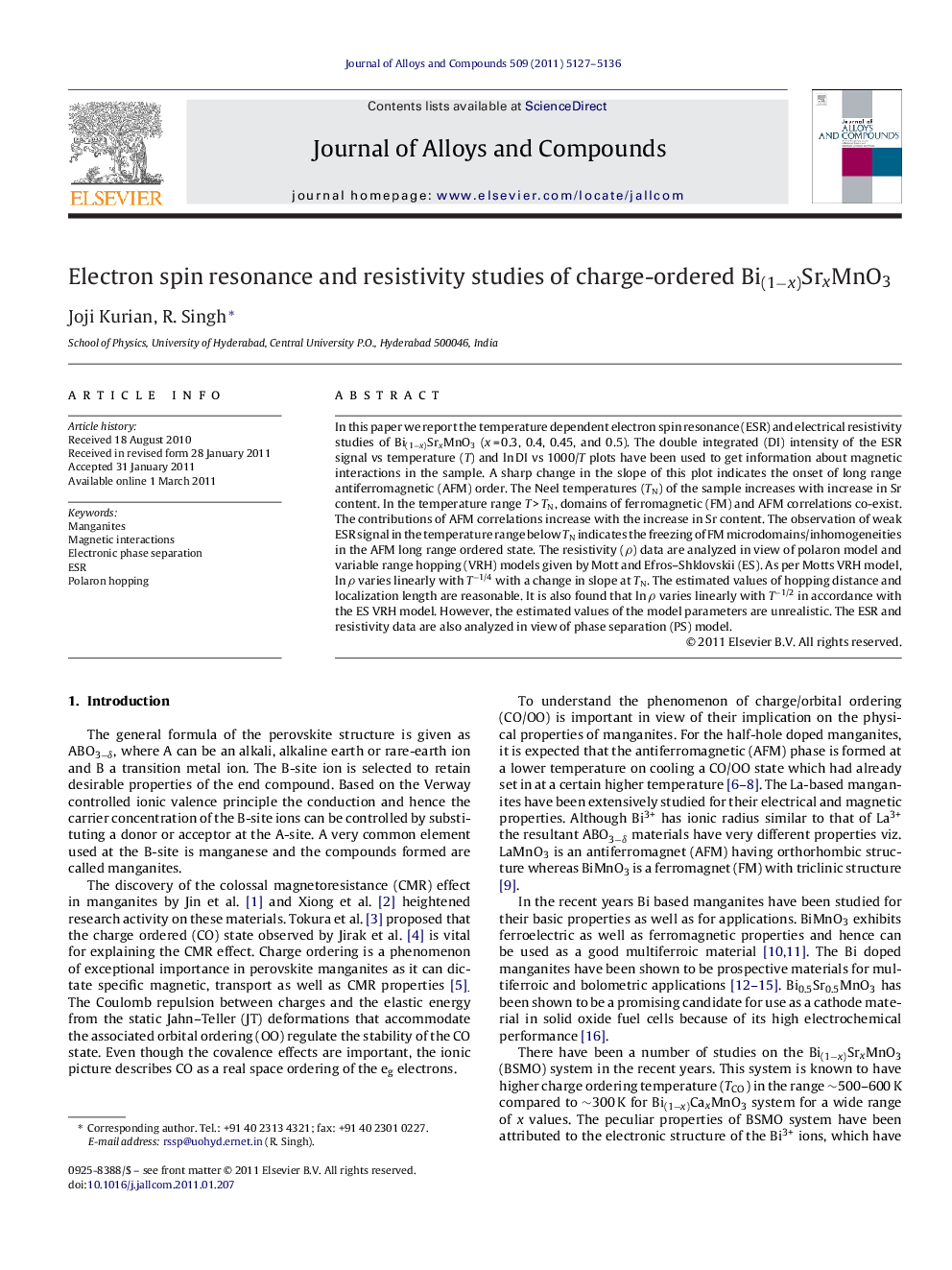| Article ID | Journal | Published Year | Pages | File Type |
|---|---|---|---|---|
| 1618609 | Journal of Alloys and Compounds | 2011 | 10 Pages |
Abstract
⺠The temperature dependent electron spin resonance (ESR) and electrical resistivity studies on Bi(1âx)SrxMnO3 (x = 0.3, 0.4, 0.45, and 0.5) were carried out. ⺠The double integrated (DI) intensity of the ESR signal verses temperature and ln DI vs 1000/T plots have been used to get information about magnetic interactions. ⺠The Neel temperature (TN) of the sample is found to increase with increase in Sr content. ⺠In the temperature range T > TN domains of ferromagnetic (FM) and antiferromagnetic (AFM) correlations co-exist. ⺠The contribution of AFM correlations increase with the increase in Sr content. ⺠The observation of weak ESR signal in the temperature range below TN indicates the freezing of FM microdomains/inhomogeneities in the AFM long range ordered state. ⺠The resistivity data is analyzed in view of the polaron model and the Mott's and Efros-Shklovskii variable range hopping (VRH) model of electrical conduction. ⺠As per Motts VRH model, lnÂ Ï varies linearly with Tâ1/4 with a change in slope at TN. The estimated values of hopping distance and localization length are reasonable. ⺠It is also found that lnÂ Ï varies linearly with Tâ1/2 in according with the ES VRH model however the estimated values of the model parameters are unrealistic. ⺠The ESR and resistivity data are also analyzed in view of phase separation (PS) model.
Related Topics
Physical Sciences and Engineering
Materials Science
Metals and Alloys
Authors
Joji Kurian, R. Singh,
